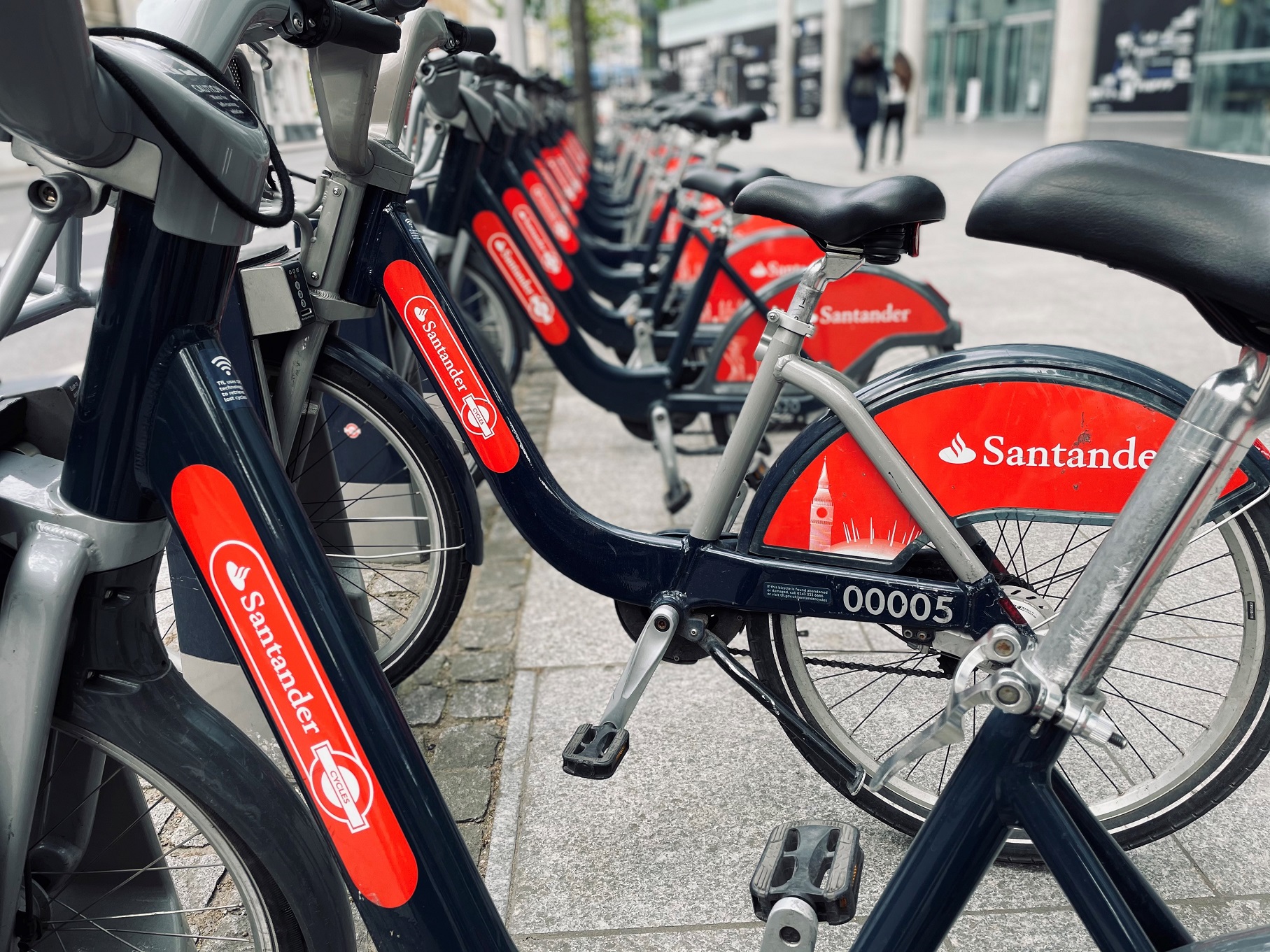
Can you explain who you both are and what your backgrounds are?
Friso: I am a senior consultant who works for Advier, a consultancy firm in the Netherlands. My areas of expertise include shared mobility and behaviour change.
Rebecca: As an urbanist, I am working for the City of Bremen as a sustainable mobility project coordinator. One of my jobs is to extend the network of mobility hubs in Bremen, the city that invented the mobility hub concept 15 years ago.
Friso: Rebecca and I have bundled our experiences to write this book. But we did not do it alone: the book is a co-production from the Share-North project team, in which a group of experts on shared mobility, working for cities, regions, NGOs (non-government organisations), consultancies and universities have joined forces. The brilliant Shared Mobility Rocks brand was created by the Flemish NGOs Autodelen.net and Taxistop for their annual, unconventional shared mobility symposium: www.shared-mobility.rocks.
Who is the book aimed at?
Rebecca: Policymakers, providers, researchers, students, users and everyone else who is interested in the buzzing world of shared mobility.
Why did you feel the book was necessary?

Friso: Over the last couple of years, shared mobility has been put in the spotlight. Many trends point in the direction of sharing: this is already reflected in the current growth of shared mobility markets like car-share and bike-share. While writing the book, we were surprised by the birth of new shared micromobility options like e-scooter-sharing and e-moped-sharing. We needed to revise the book before it was published, which reflects the high pace of the sector. At the same time, smart mobility, Mobility as a Service (MaaS) and mobility hubs are getting higher on the political agenda.
Rebecca: Shared mobility is an important answer to major mobility challenges on a global, regional and local scale. From climate change to scarcity of public space in cities and the accessibility of the countryside, shared mobility can be part of the solution, as it helps to decrease car dependency. By doing so, the need to own a car decreases and the use of sustainable and active travel modes like walking, cycling and public transport increases. However, it’s not always easy to make head or tail of the shared mobility universe. There are many forms and sub-forms of shared mobility, each with its own impact, downsides, role of the government, etc. Our book tackles all the basics of shared mobility - from the different forms and definitions to the impacts and potential of car-sharing, ride-sharing, bike-sharing, MaaS, mobility hubs and more.
Friso: Shared mobility comprises a lot of unrelated modes. Look at the wording: in car-sharing people speak about roundtrip and free-floating. For bike-sharing it is ‘back-to-one’, ‘back-to-many’, ‘docked’ or ‘dockless’... Every sector is creating its own signage, so coherence between shared mobility is lacking. And research mostly focuses on the impact of one form of shared mobility. Meanwhile there is a need to relate things digitally - with MaaS - and physically with mobility hubs. This makes it necessary to define common standards. The uniform icon set that we developed during Share-North is used in the book in order to show the way.
How did you start collecting data and case studies?
Rebecca: The Share-North consortium consists of frontrunners in different areas around shared mobility, and we are well informed about recent literature from both the academic and policy fields. Part of the team is involved with the implementation of shared mobility. Many case studies in the book are living labs that are implemented as a part of our joint projects. Some of us are involved with research: for example, our UK partner ComoUK is involved in annual surveys around car-sharing (called car clubs in the UK), bike-sharing and recently also e-scooter-sharing.
Friso: In some cases, it was a challenge to find data, e.g. around car-pooling there is a lot of ‘experiences in the heads of experts’ but not so much literature. And micromobility is so new that historic insights still are lacking. As a team, we were able to find the required sources. Sometimes we concluded that data sources still are insufficient. We believe that it is important to mention this. All the partners have delivered parts of the storyline and content about the case studies.
Is there any specific information on North America in your book?

Rebecca: That’s a great question. The book mainly focuses on Europe, but there is a lot of research from North America. Therefore, it’s good to get acquainted with the differences between both continents. Luckily, I was raised in the US and recently we established a close working relationship with the US-based Shared Use Mobility Centre. What strikes us is the high impact of shared mobility on the number of car trips in North America. This has to do with the level of car use, which is far higher than in Europe. Every form of mobility that gives people more choice options immediately affects the number of car trips. Early data about e-scooter-sharing in Europe points to this replacing far more walking and cycling trips. That’s why policymakers in European cities raise questions about the added value of these kind of services. On the other hand, there is far less public space in European cities. This is a major trigger to put shared mobility on the agenda. Cities will be growing in the next decade, but there is no more space for all these new residents to park their cars and drive through town. Shared mobility provides an answer to this, but this also requires space - which makes it a real challenge. North American cities are less dense - which in turn is a challenge, because shared mobility works better in dense cities.
Can you summarise a few of the main golden rules?
#1 Shared mobility decreases car dependency.
#2 Shared mobility results in more walking, cycling and public transport use.
#3 Shared mobilty liberates urban space.
#4 Without proper policy frameworks, shared mobility cannot rock!
Did any of the information you found surprise you?
Friso: One of the most surprising outcomes is that there is a strong synergy effect between shared mobility modes. The more shared mobility is available, the more people can choose from, which makes people less car-dependent. But it goes even further: once people are acquainted with one form of shared mobility, it is easier for them to understand all the rest. Therefore, we suppose that shared e-scooters are highly relevant for cities. They attract young people into shared mobility, and once they have their driver’s licence they are much more likely to explore car-sharing.
If you had just one piece of advice for readers, what would it be?
Rebecca: One of the main lessons from the case studies is that communication over a longer period of time is a critical success factor. In many projects, communication only happens during the project start or during a short period. People are used to having their own transport means, so they have to get used to the idea of sharing. This takes time and a lot of communication: take this time and talk with people. ITS
Share-North is launching a series of 10 webinars around the book: subscribe at www.share-north.eu where you can also pre-order the book Shared Mobility Rocks: a Planner’s Guide to the Shared Mobility Galaxy












